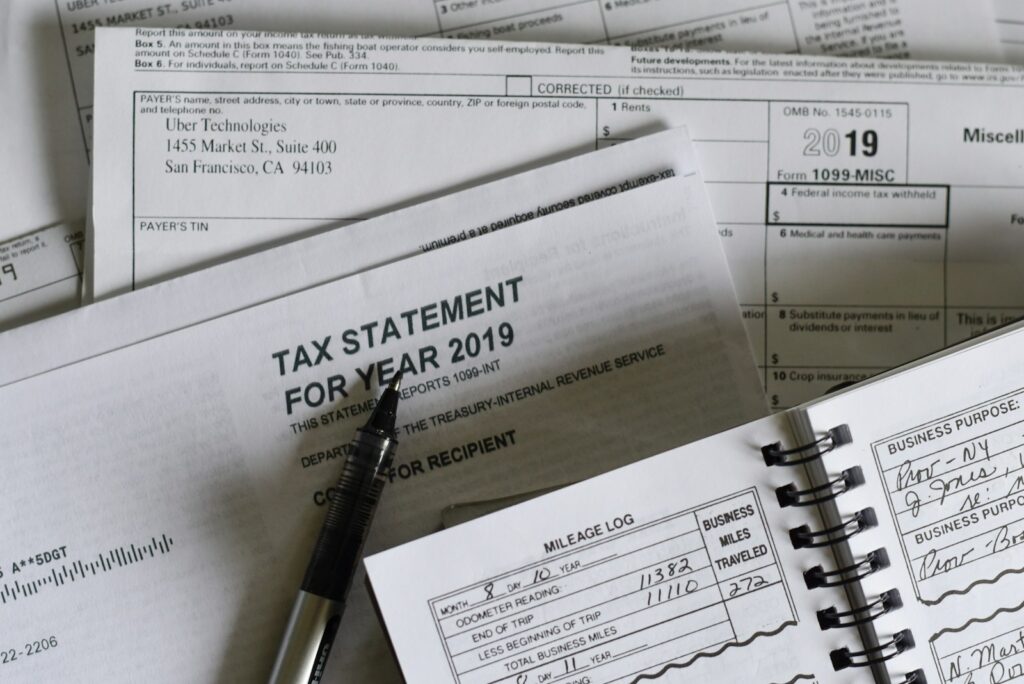
Tax season, for many, is a period of anticipation, often centered around the hopeful prospect of a refund. However, this natural excitement also creates a fertile ground for sophisticated cybercriminals and fraudsters who are constantly adapting their tactics to exploit taxpayers. The Internal Revenue Service (IRS) has issued urgent warnings regarding a rising tide of new refund fraud scams circulating, designed to mislead individuals about their tax refunds, credits, and payments. These scams are not merely annoying; they are meticulously crafted traps that can lead to identity theft, financial loss, and severe legal consequences for those unknowingly ensnared.
Today’s digital landscape, with its rapid communication channels and widespread social media use, has inadvertently provided scammers with new avenues to reach potential victims. Unlike the past, where fraudsters primarily relied on phone calls, the current threat environment sees a significant surge in deceptive emails, text messages, and misleading online advice. This shift demands a heightened level of vigilance from every taxpayer, as the lines between legitimate communication and fraudulent solicitations become increasingly blurred. Knowing what to watch out for, understanding how the IRS *actually* contacts you, and recognizing the red flags are your first and most critical lines of defense.
We understand that navigating the complexities of tax season can be daunting enough without the added stress of worrying about scams. That’s why we’ve compiled this comprehensive guide, drawing directly from IRS alerts and expert advice, to empower you with the knowledge and actionable steps needed to protect yourself. Our goal is to demystify these predatory schemes, highlight their warning signs, and provide clear, practical guidance on how to avoid becoming a victim. By being informed and proactive, you can safeguard your personal information and hard-earned money from these relentless scam artists.

1. **The Pervasive Threat of IRS Impersonation: Email, Text, and Phone Scams**One of the most foundational and persistent scam tactics involves impersonators pretending to be from the IRS. These criminals leverage the authority and fear associated with the tax agency to pressure victims into making hasty, ill-advised decisions. They understand that the mere mention of the IRS can cause anxiety, which they expertly exploit to bypass rational judgment. While the methods of contact vary, the underlying goal remains consistent: to trick you into divulging sensitive personal or financial information.
It is absolutely crucial to understand the IRS’s official communication protocols. The agency explicitly states, “The IRS never initiates contact with taxpayers by email, text or social media regarding a bill or tax refund.” This single, unequivocal statement serves as your primary defense. If you receive an unsolicited email, text message, or social media message claiming to be from the IRS, demanding immediate action, or promising a refund, it is a scam – full stop. Real IRS communication regarding specific tax matters almost exclusively begins with official letters sent via the United States Postal Service.
While the IRS *might* call you, it’s typically only if you’ve already initiated contact or have an ongoing issue where a phone call is a logical follow-up to previous correspondence. They will *never* call you at random and demand immediate payment, threaten arrest, or deportation. Such aggressive and intimidating tactics are classic hallmarks of a scammer. Always remember, legitimate government agencies provide avenues to question or appeal any amounts owed, a courtesy never extended by fraudsters.

2. **Targeted Email and Text Message Refund Scams: The Latest Digital Lures**Beyond general impersonation, scammers are now deploying highly specific and sophisticated email and text message schemes designed to capitalize on the universal desire for a tax refund. These scams are often tailored to appear incredibly legitimate, sometimes even incorporating official IRS logos and professional-looking formatting, making them particularly difficult for the untrained eye to discern as fraudulent. This rising trend has prompted the Federal Trade Commission (FTC) and the IRS to issue specific alerts.
One prevalent scam involves emails that promise a specific, seemingly random refund amount, such as “$825.71,” and include a PDF attachment or a link supposedly leading to the refund claim process. Another common variation involves messages claiming you are “eligible for a tax refund” and must “click to verify your details.” These messages prey on the urgency and excitement of a potential refund, encouraging immediate action without critical thought. The scammer’s ultimate goal is to either steal your identity or install malware on your device once you click the malicious link.
Similarly, text message scams are preying on taxpayers by referencing specific credits, like the 2021 Recovery Rebate Credit or Economic Impact Payments. These texts falsely claim recipients will receive a payment and prompt them to click a link or provide sensitive information to “claim” it. The IRS has made it clear that eligible taxpayers for the Recovery Rebate Credit receive payments automatically, with “no action is needed from you to get it.” Any text asking for verification or personal details for such payments is unequivocally a scam.

3. **The Deceptive Allure of Bad Social Media Tax Advice**In an age where information spreads instantaneously, social media platforms have become an unexpected, yet potent, breeding ground for tax scams. The IRS has identified “bad social media advice” as a growing concern, noting how these platforms “routinely circulate inaccurate or misleading tax information.” What might initially appear as a helpful tip or a shortcut to a bigger refund can, in reality, be dangerously fraudulent advice leading to significant legal and financial peril for unsuspecting taxpayers.
These schemes often feature influencers or anonymous posts peddling “wildly inaccurate tax advice,” sometimes even encouraging people to lie on tax forms or misuse legitimate forms like W-2s to generate larger, but entirely fictitious, refunds. Examples include suggestions to claim non-existent credits, such as the “Self-Employment Tax Credit,” which promoters market with promises of “big payments for the COVID-19 pandemic period” that simply do not apply to the vast majority of people.
The consequences of following such misguided advice can be severe. The IRS warns that taxpayers who “knowingly file fraudulent tax returns that they could potentially face significant civil and criminal penalties.” Even if the taxpayer is unaware of the fraudulent nature of the advice, claiming ineligible credits or providing false information can lead to delayed refunds, audits, fines, or even imprisonment. It underscores the critical importance of verifying all tax advice through official IRS channels or with a trusted, legitimate tax professional, rather than relying on unverified social media claims.
Read more about: Protecting Your Peace of Mind: AARP’s Essential Guide for Older Adults to Spot and Prevent Financial Scams

4. **The Risky Game of Overstated Withholding and Fake Income Scams**A particularly brazen scheme circulating, especially on social media, involves encouraging taxpayers to deliberately falsify their income and withholding information on official forms. This scam specifically targets forms like W-2, Wage and Tax Statement, or 1099-NEC, Nonemployee Compensation, and other 1099s. The core of this deceit is to invent “large income and withholding amounts, as well as the fictional employer supplying those amounts,” with the explicit aim of generating an artificially inflated refund.
Scam artists instruct people to file these bogus tax returns electronically, banking on the hope of receiving a “substantial refund due to the large amount of fraudulent withholding.” This is a high-stakes gamble for the taxpayer, as the IRS is equipped to detect such discrepancies. While the immediate allure of a large refund might be tempting, the reality is far more grim. The IRS explicitly states that if they “cannot verify the wages, income or withholding credits entered on the tax return, the tax refund will be held pending further review.” This means not only will you not get the fraudulent refund, but your *legitimate* refund will also be significantly delayed.
Beyond delays, knowingly participating in such a scheme carries severe repercussions. Filing a tax return with false information can lead to audits, substantial penalties, and even criminal prosecution. It’s a classic example of “if it sounds too good to be true, it probably is” – a quick, illicit payday promised by a scammer will invariably lead to protracted headaches and financial distress for the taxpayer, potentially turning a legitimate refund into a legal nightmare.

5. **Misinformation and Fraud Surrounding the Employee Retention Credit (ERC)**The Employee Retention Credit (ERC) was a legitimate, refundable tax credit designed to help businesses during the COVID-19 pandemic. However, its complexity and the substantial amounts involved have made it a prime target for fraudsters and misleading promoters. The IRS has issued multiple warnings about “incorrect information on how to get a bigger refund” related to the ERC, which misleads businesses and tax-exempt groups into claiming credits they are not eligible for.
These misleading schemes often involve aggressive advertising, mail, and online sources that promise large ERC payouts, sometimes even charging “large, upfront fees or a fee based on your refund amount.” Promoters might misrepresent the eligibility rules, suggesting that many businesses qualify when, in fact, the credit is limited to very specific situations. This often results in businesses improperly filing claims, which generates “compliance risk for people and businesses claiming credit improperly.”
The IRS has been proactive in alerting taxpayers to the warning signs of these misleading ERC scams, emphasizing that “false claims generate compliance risk.” Businesses that fall for these schemes and file incorrect claims can face significant consequences, including having their claims disallowed, being required to pay back the credit with penalties and interest, and even audits. It is crucial for businesses to exercise extreme caution and consult with reputable tax professionals or the official IRS guidance before claiming any ERC, to ensure full compliance and avoid inadvertently engaging in fraud.

6. **Website Links, Malicious Attachments, and Malware Traps**One of the most insidious and common tactics employed in digital scams is the use of malicious links and attachments. Whether embedded in a fake email, a deceptive text message, or a suspicious social media post, these elements are designed to be the gateway for scammers to compromise your digital security. The promise of a tax refund, an urgent alert, or a request for “verification” often serves as the bait to get you to click without thinking, leading directly into a trap.
Clicking on “odd or misspelled web links” can direct you to harmful sites that are designed to mimic legitimate IRS pages but are, in fact, phishing portals intent on stealing your login credentials or personal information. Similarly, opening attachments from unknown sources, even if they appear to be official documents like PDFs, can install “malware on your computer or phone.” This malicious software can then silently collect your sensitive data, monitor your activities, or even hijack your device, turning it into a tool for further fraudulent activities.
To protect yourself, the advice is straightforward and non-negotiable: “Never click on any links” or download attachments from unsolicited or suspicious messages claiming to be from the IRS. If you genuinely believe you might need to interact with the IRS online for a refund status or other account information, bypass any links provided in an email or text. Instead, always navigate directly to the official IRS website (irs.gov) by typing the URL into your browser. This simple step ensures you are on a legitimate site and not a scammer’s impostor page, safeguarding your personal and financial data.” , “_words_section1”: “1948

7. **Charity Impersonators: When Good Intentions Meet Bad Actors**Amidst calls for donations, particularly during times of widespread need or after a disaster, scammers are quick to exploit generosity. These criminals pose as legitimate charitable organizations, using emotional appeals to trick unsuspecting taxpayers into making contributions that never reach their intended recipients. The IRS explicitly warns, “Your donation or website link doesn’t go where you think it will,” highlighting the deceptive nature of these schemes that manipulate empathy for illicit gain.
The financial repercussions for victims extend beyond simply losing their donated money. Donations made to fake charities are not tax-deductible, meaning taxpayers cannot claim these amounts on their returns, adding insult to financial injury. These fraudulent organizations often disappear as quickly as they emerge, making it nearly impossible to recover lost funds or hold the perpetrators accountable for their deception. It’s a double blow where your kindness is exploited and your tax benefits are denied.
To safeguard your charitable giving, always conduct thorough due diligence before opening your wallet. The IRS advises, “Search for a tax-exempt organization” to verify its legitimacy directly through official channels. Official IRS statements like “Beware of fake charities; check before donating” and reminders that the “IRS joins effort to fight charity fraud during international recognition week” underscore the critical importance of this proactive step. A quick check on the official IRS website or with a reputable charity watchdog can confirm if an organization is truly tax-exempt and capable of putting your contributions to the noble causes they claim to support, protecting both your money and your good intentions.

8. **Disaster Fraud: Exploiting Vulnerability in Times of Crisis**Natural disasters and other emergencies bring out the best in communities, but they also attract the worst in opportunistic scammers who prey on distress. These unscrupulous individuals capitalize on the chaos and heightened emotions following a disaster, posing as relief workers or government agents to defraud victims when they are most vulnerable. Their tactics often involve offering deceptive “help” with casualty loss claims or promising “big tax refunds” to those affected by tragedy.
Scammers frequently impersonate government officials, claiming to work “for or on behalf of the IRS” to gain immediate trust and access to sensitive personal information. They might offer expedited processing for disaster relief funds or promise swift assistance with property damage claims, all while secretly aiming to steal identities, collect illicit fees, or gain access to bank accounts. The urgency of post-disaster recovery makes individuals particularly susceptible to these high-pressure tactics, as they may overlook critical red flags in their haste for immediate assistance.
The IRS provides clear guidance on how to avoid these traps, emphasizing that “People should donate carefully after a disaster to avoid scams” and verify every solicitation. For legitimate assistance, always consult official sources such as “Disaster assistance and emergency relief for individuals and businesses” links from IRS.gov or other verified government websites. Remember, genuine relief efforts will never demand upfront payments, pressure you into quick decisions, or ask you to share personal information through unofficial, unverified channels. Learning “How to avoid fraud and scams after a disaster” is not just helpful, it’s an essential survival skill for financial protection.

9. **Dishonest Tax Preparers: Choosing Your Tax Professional Wisely**Entrusting your confidential financial information to a tax preparer requires a high degree of confidence and trust, as they hold the keys to your personal and financial security. Unfortunately, not all preparers operate with integrity, and some intentionally engage in fraudulent practices that can severely jeopardize your financial standing and lead to significant legal issues with the IRS. The IRS issues strong warnings about “Dishonest tax preparers,” underscoring the critical need for taxpayers to exercise extreme caution when selecting who will handle their sensitive tax matters.
Several glaring red flags can signal that a tax preparer is not to be trusted, and recognizing these is your first line of defense. The IRS specifically cautions against preparers who “Don’t sign the return,” as this indicates an unwillingness to take responsibility or accountability for the information submitted to the government. Other serious warnings include preparers who “Falsifies tax information” to generate larger, but illegal, refunds or those who attempt to “Puts your refund in their bank account” instead of yours, redirecting your legitimate funds. A preparer who “Requires you to pay in cash or doesn’t give you a receipt” is also highly suspicious, suggesting an attempt to avoid proper record-keeping and transparency.
Protecting yourself from such unscrupulous individuals involves careful selection and ongoing vigilance throughout the tax preparation process. The “IRS reminds taxpayers: Choose a tax professional carefully” by verifying their credentials, checking their history with consumer protection agencies, and ensuring they provide a clear, upfront fee structure. Always review your completed return thoroughly before it’s filed, ask questions about anything you don’t understand or that seems unusual, and insist on receiving a signed copy of your return for your personal records. A truly reputable preparer will always be transparent, responsive, and prioritize your financial well-being and legal compliance above all else.

10. **Scams Targeting Seniors: Protecting Our Most Vulnerable Taxpayers**Our senior citizens, particularly those “over age 65 or nearing retirement,” represent a demographic frequently targeted by relentless scammers due to perceived financial stability and potential isolation. These criminals see seniors as potentially lucrative victims, often possessing retirement savings and sometimes less familiar with modern digital communication pitfalls or high-pressure sales tactics. The schemes employed are often highly coercive, designed to extract “personal or financial information or money” through intimidation, fear-mongering, or false promises of windfalls.
A pervasive and deeply damaging aspect of these scams is a persistent demand for funds, with fraudsters often asking for more money even “once you give them money,” trapping victims in a cycle of exploitation. This insidious tactic can rapidly deplete a senior’s hard-earned savings. A particularly insidious aspect is when criminals “trick you to withdraw from your retirement account,” which not only leads to immediate financial loss but can also trigger significant “taxes” and penalties for early distributions, as highlighted in “Retirement topics – Exceptions to tax on early distributions” – an unforeseen double penalty.
The IRS is actively working to combat these predatory schemes, issuing warnings and collaborating with other federal agencies to raise awareness. The “IRS warns against scams targeting seniors; joins other federal agencies to recognize special awareness day” emphasizes the collective effort to protect this vulnerable group, urging family and caregivers to be involved. To safeguard seniors, it is crucial to educate them about these specific risks, encourage skepticism toward unsolicited calls or messages, and advise them to consult trusted family members, financial advisors, or the official IRS website before making any significant financial decisions prompted by external pressure. Transparency and verification are key.

11. **Tax Debt Settlement Scams: The Illusion of ‘Pennies-on-the-Dollar’ Relief**For taxpayers facing significant tax liabilities, the promise of a quick and easy resolution can be incredibly tempting, especially when feeling overwhelmed by debt. This vulnerability is precisely what “Tax debt settlement or relief services” scammers exploit, preying on the natural desire to resolve financial burdens. These promoters aggressively market their services, pressuring individuals to utilize them with enticing but often false claims that they can “relieve your tax debt for ‘pennies-on-the-dollar,'” a phrase designed to sound too good to be true.
The deception lies in the misrepresentation of legitimate IRS programs, such as the Offer in Compromise (OIC), which allows some taxpayers to settle their tax debt for a lower amount under very specific, strict circumstances. However, these scammers often charge “large, upfront fees” and “rush you to pay them for this service,” implying that their intervention is essential and exclusive, creating a false sense of urgency. In reality, their services are often unnecessary, overpriced, or even detrimental, as they may not qualify taxpayers for an OIC or adequately represent their interests, leaving clients worse off.
The IRS is very clear on this matter: “You can settle your tax debt directly with us if you’re eligible for an offer in compromise (OIC),” emphasizing that taxpayers have direct access to these legitimate avenues. There is no need for costly intermediaries who often provide little to no value beyond what taxpayers can achieve themselves or with proper, ethical professional guidance. The “IRS “dirty dozen” list specifically warns people to watch out for Offer in Compromise ‘mills’ where promoters claim their services are needed to settle IRS debts,” highlighting a common fraudulent business model. Taxpayers should always approach the IRS directly or consult a reputable, licensed tax professional for legitimate debt resolution advice, rather than falling prey to high-pressure sales tactics from these dubious services.

12. **Unclaimed Tax Refund Impersonation Mail: Old School, New Tricks**While digital scams, such as phishing emails and texts, often dominate the headlines, cybercriminals haven’t abandoned traditional methods to ensnare victims. A resurgence of “Unclaimed tax refund Impersonation mail” demonstrates how fraudsters continue to adapt their strategies, misleading taxpayers through physical correspondence delivered right to their mailboxes. Unlike the purely digital scams discussed earlier, this approach relies on the tangible nature of postal mail to create a heightened sense of legitimacy and urgency, often looking like an official notice about money owed to you.
This particular scheme involves “unusual delivery service mailing” that tries to trick people into divulging highly sensitive information under the guise of claiming a refund. The mail often directs recipients to send “photos, bank account information” or other deeply personal data to supposedly claim their “unclaimed refund,” information that is invaluable to identity thieves. The sophisticated appearance of these mailings, sometimes even mimicking official government stationery and seals, can be incredibly convincing, especially for those not accustomed to scrutinizing every piece of unexpected mail.
The IRS, in conjunction with Security Summit partners, has specifically warned taxpayers about this “new scam,” emphasizing that vigilance extends beyond the digital realm. The key takeaway remains consistent across all scam types: the IRS will never initiate unsolicited contact asking for sensitive personal or financial details through unusual delivery services or methods that circumvent official, established channels. If you receive unexpected mail about an unclaimed refund, your safest course of action is to verify its legitimacy by visiting the official IRS website (irs.gov) directly or by calling their main assistance line, rather than responding to any suspicious mailing. This proactive approach ensures your personal data remains secure.

13. **Sophisticated Attacks Against Tax Professionals: Protecting the Gatekeepers of Your Data**The digital battlefield of tax scams extends far beyond individual taxpayers, increasingly targeting the very professionals entrusted with sensitive financial information. Cybercriminals are now deploying highly sophisticated tactics, such as the “new client” scam identified by the IRS for 2025, specifically designed to infiltrate tax professionals’ computer systems and networks. This evolution in scamming highlights the growing danger to client data and the critical need for enhanced security measures within the tax preparation industry itself.
This “new client” scam typically begins with fake emails or texts, meticulously crafted to appear as genuine inquiries from new, potential clients seeking tax preparation services. These messages are expertly designed to overcome a tax professional’s initial skepticism, often mimicking common business communication. “Once the tax pro responds,” the IRS warns, “the scammer sends a malicious attachment or URL that can compromise the preparer’s computer systems,” turning a seemingly innocuous interaction into a critical security breach through social engineering.
The consequences of falling victim to such an attack are dire and far-reaching. A compromised system allows the attacker to “access sensitive client information,” including Social Security numbers, bank details, and comprehensive financial records for potentially hundreds or even thousands of individuals. This data can then be used for widespread identity theft and fraudulent tax filings. The IRS explicitly advises tax professionals to “Protect your clients; protect yourself” by recognizing these advanced threats. Implementing robust cybersecurity, continuously training staff to identify phishing attempts, and verifying the identity of new clients through established, secure, and independent channels are indispensable steps to safeguard both professional integrity and invaluable taxpayer privacy.
The landscape of tax fraud is an ever-shifting one, with relentless scammers constantly refining their tactics to exploit every possible vulnerability, from exploiting goodwill to leveraging digital sophistication. From charity impersonators and disaster fraud artists preying on altruism, to dishonest tax preparers and sophisticated attacks against the very professionals safeguarding your data, the threats are diverse and pervasive. However, armed with unwavering vigilance and accurate information directly from the Internal Revenue Service, taxpayers can significantly reduce their risk and protect their financial well-being. Remember the core principles: the IRS will never initiate contact via unsolicited email or text, they will never demand immediate payment via gift card or threat of arrest or deportation, and legitimate information is always readily available on IRS.gov. By staying informed, being skeptical of anything that sounds too good to be true, and diligently reporting suspicious activity, you become a powerful, proactive defender against these pervasive schemes, ensuring a safer and more secure tax season for everyone.




